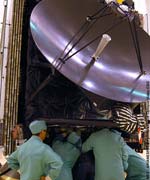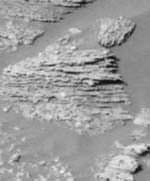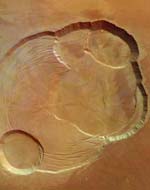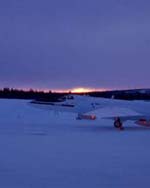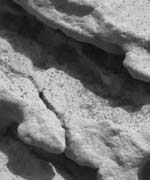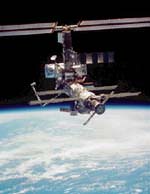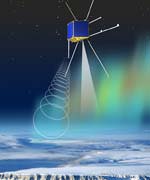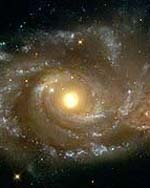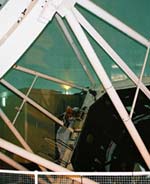
Image credit: ULTRACAM
Although there are numerous telescopes – both large and small – examining the night sky at any one time, the heavens are so vast and so densely populated with all manner of exotic objects that it is extremely easy to overlook a significant random event. Fortunately, a new generation of scientific instruments is now enabling UK astronomers to prepare for the unexpected and become leaders in so-called “Time Domain Astrophysics”.
Exciting new observations of many different, time-variable celestial objects, ranging from black hole X-ray binaries to flare stars and Saturn’s moon Titan will be presented at a Royal Astronomical Society Specialist Discussion Meeting on Friday, 13 February (details below). The meeting will also feature presentations on several ground-breaking UK instruments which make these observations possible.
The Universe around us is constantly changing. Sometimes, the map of the heavens is rewritten by sudden, violent events such as gamma ray bursts (GRBs) and supernovae. Sometimes, a wandering near-Earth asteroid or a gravitational lensing event makes its unpredictable appearance. Most frequently, a star will undergo a modest fluctuation in optical brightness or energy output.
Observing such apparitions and variations can unlock the secrets of a wide variety of the most intriguing and important astronomical objects. Unfortunately, it has proved surprisingly difficult to undertake the type of observations that are required using conventional telescopes and their instruments to solve many outstanding puzzles.
In order to understand these types of phenomena, it is necessary to conduct long term monitoring programmes or to be able to react within minutes to chance discoveries made by other observatories or spacecraft.
“A new generation of facilities, designed and built in the UK, is poised to give the nation’s astronomers a world-leading position in what is dubbed the ‘Time Domain’,” said Professor Mike Bode of Liverpool John Moores University, co-organiser with Professor Phil Charles (Southampton University) of the Royal Astronomical Society meeting about the latest technological breakthroughs in observational astronomy.
This new generation includes the “ULTRACAM” high speed camera, which is being used on various front-rank telescopes around the world. A collaboration between Sheffield and Warwick Universities and the Astronomy Technology Centre, Edinburgh, ULTRACAM can observe changes in brightness lasting only a few thousandths of a second. It has been used to explore the environments of objects as diverse as the atmosphere of Saturn’s smog-shrouded moon, Titan, to the last gasps of gas spiralling into black holes.
Another pioneering instrument is “Super WASP”, a novel telescope comprising effectively five wide-angle cameras. Led by astronomers from a consortium of UK universities, including Queens Belfast, Cambridge, Leicester, Open, and St Andrews, as well as the Isaac Newton Group on La Palma in the Canary Islands, the first Super WASP began operations on La Palma in November 2003.
With its very wide field of view, the telescope can image at any one time an area of sky equivalent to around 1,000 times that of the full Moon. In this way, it is able to observe hundreds of thousands of stars per night, looking for changes in brightness, and discovering new objects. In particular, Super WASP will play a key role in the search for planets in other star systems as they cross the face of their parent star and the flashes of light that may accompany the most dramatic, and enigmatic, explosions since the Big Bang – the so-called Gamma Ray Bursters. In the course of its work, Super WASP will also discover countless asteroids in our own Solar System.
The third of the new facilities is the Liverpool Telescope (LT) on La Palma, pioneering the next-generation robotic telescopes that is being built in Birkenhead by Telescope Technologies Ltd. With its 2m (6.6ft) diameter main mirror, which makes it the largest robotic telescope dedicated to research ever built, the LT started science operations in January 2004. It is owned and operated as a “space probe on the ground” by Liverpool John Moores University (JMU), and supported by funding from JMU, the Particle Physics and Astronomy Research Council, the European Union, the Higher Education Funding Council and the generous benefaction of Mr Aldham Robarts.
Although only operational for just under a month, the LT has already observed a wide range of objects from comets and asteroids, through exploding stars (novae and supernovae) to the variations in light of the centres of active galaxies where it is thought that supermassive black holes may be lurking.
The RAS meeting will also be presented with a vision of the future in which a network of giant robotic telescopes like the LT would be sited around the globe. This robotic telescope network (“RoboNet”) would act as a single, fast-reacting telescope, able to observe objects anywhere on the sky at any time and to follow them 24 hours a day if necessary.
Taking advantage of developments in internet technology, the network will be automatically and intelligently controlled by software developed by the e-STAR project (a collaboration between Exeter University and JMU). e-STAR links the telescopes via “intelligent agents” directly to archives and databases, so that follow-up observations of objects that are seen to vary can automatically be undertaken without human intervention.
Plans are already being considered for a prototype RoboNet based around the LT and its (primarily educational) clones, the Faulkes Telescopes, in Hawaii and Australia. This would lead next to the establishment of a dedicated network in the southern hemisphere searching for planets around other stars. The REX (the Robotic Exo-planet discovery network) project, led by the University of St Andrews, holds out the best prospects for the detection of Earth-like planets around other stars prior to the launch of vastly more expensive space-based observatories in the next decade.
Original Source: RAS News Release
